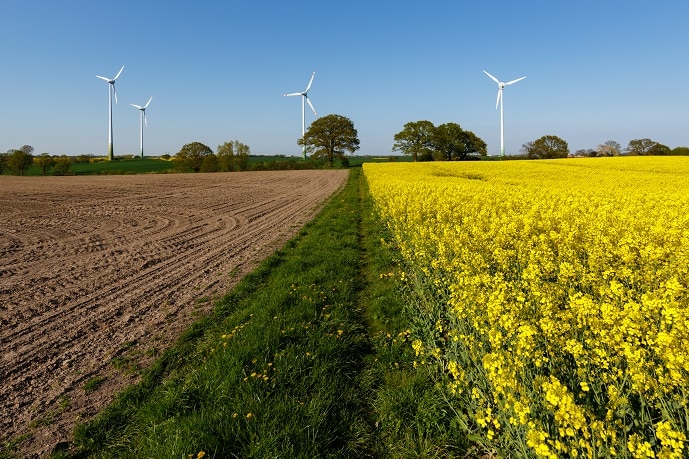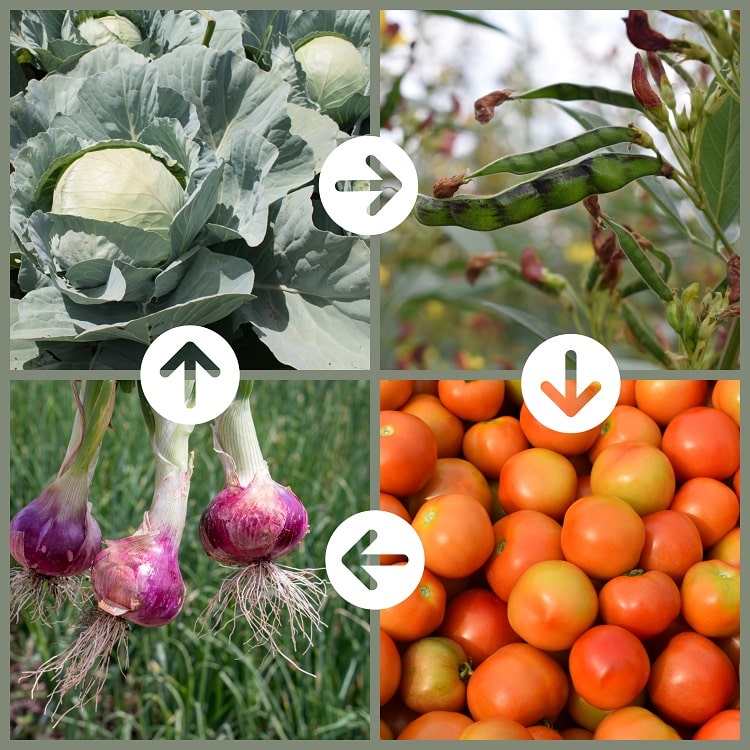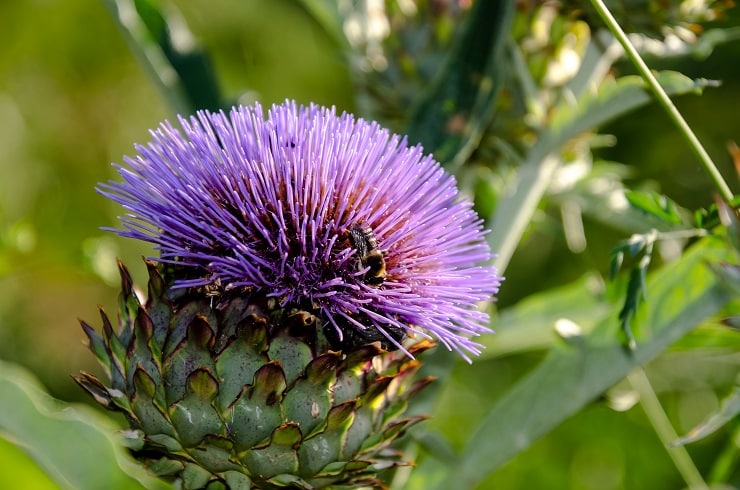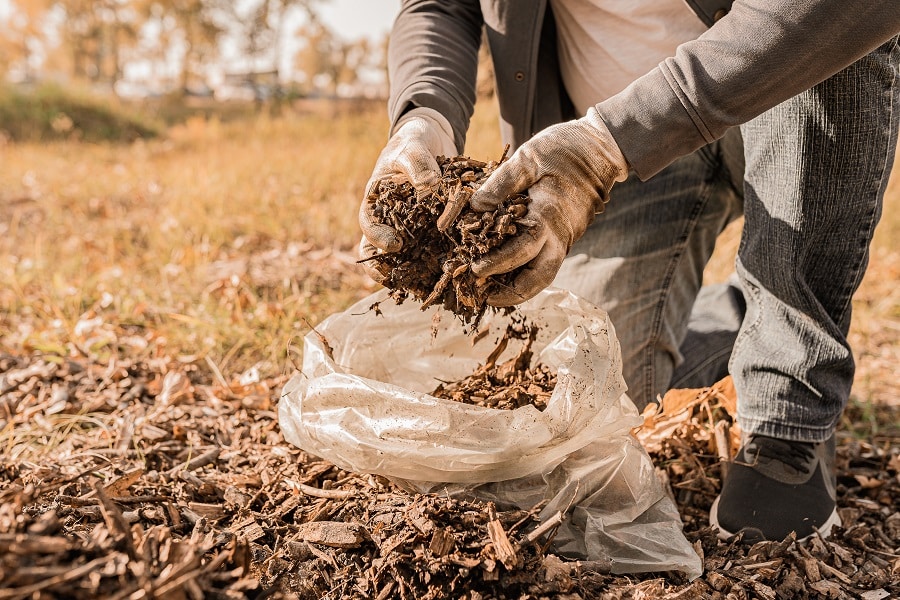
What is regenerative gardening?
Regenerative gardening is an environmentally conscientious approach to managing and planting gardens. Simply put, it means growing plants with the environment in mind, not just your consumption needs. This way, you nourish the soil naturally instead of depleting it and attempting to fix it with fertilizers.
Regenerative gardening techniques enrich the soil’s microscopic life for robust ecosystems. In addition to maintaining the soil’s quality, regenerative agriculture increases soil fertility and makes efficient, natural, and cautious use of natural resources.
Why is regenerative gardening important? Currently, global agriculture practices threaten over 24,000 species in danger of extinction. Regenerative farming at scale can help counter climate change. At the individual level, it enables you to live a sustainable, self-sufficient life and increase soil fertility for healthier crops.
Regenerative gardening vs. permaculture: what’s the difference?
Regenerative gardening differs from permaculture through techniques that integrate all human activities into the environment while working in tandem with natural ecosystems and aiming to use as few resources as possible. It goes beyond organic farming and uses techniques meant to improve food nutrition and ecosystem health, almost a byproduct of shifting gardening practices to fight climate change.
Regenerative practices include permaculture, organic gardening, and other soil revitalization techniques. Moreover, besides soil regeneration and increased productivity, regenerative farming also aims to reduce your carbon footprint and seclude carbon dioxide in the soil instead of releasing it into the atmosphere. Other benefits are habitat restoration, drought resistance, and less soil erosion.
How to start regenerating soil?
Soil regeneration starts with understanding your soil’s chemical composition and specific needs. Still, it also depends on climate patterns, your resources, and how committed you are to making this a long-term practice.
Depending on your skills and garden surface, you can use multiple gardening techniques to ensure soil regeneration and better crops yearly.
Here are some regenerative farming practices to incorporate:
- Cover crops
- Conservation tillage
- Crop rotation
- Composting
- Mulching
A more advanced regenerative technique is agroforestry, which implies the intentional integration of trees and shrubs in your garden for economic and environmental reasons.

Main steps and tips for building regenerative gardening
1) Use cover crops to improve soil health
Cover crops aren’t harvested for consumption, as their purpose is simply to cover the soil between growing seasons. They prevent erosion by eliminating weeds and improving water quality. At the same time, cover crops draw beneficial insects, lessen nitrogen runoff into streams, store carbon in the soil, and enhance fertility.
The most popular cover crops are:
- Legumes — red clover, fava beans, vetches, cowpeas (also known as black-eyed peas), alfalfa, and soybeans. Low in carbon and rich in nitrogen, they accelerate the decomposition process for other materials in your garden, fix the nitrogen, stop erosion, and enrich the soil.
- Brassicas (cabbages) — turnips, arugula, collard greens, cauliflowers, kale, broccoli, and Brussels sprouts. These plants release chemical compounds that can help you naturally manage pests. Moreover, they take up extra nutrients from earlier crops in the soil, have an excellent biomass production rate, and minimize fall erosion.
- Cereal and pseudocereal — rye, oats, barley, and buckwheat. They aerate the soil, reduce erosion, and provide rapid biomass development.
- Grasses — golden oats, golden Japanese forest grass, foxtail grass, or purple moor grass. They reclaim nutriment, particularly nitrogen, from previous crops and generate significant amounts of rich organic waste that will further enrich the soil with nutrients.
Cover crops successfully reduce weeds following crop termination and in the early stages of crop growth. They act as a physical barrier on the soil surface and restrict light to effectively suppress weeds.
2) Reduce the volume of soil disturbed with conservation tillage
Tillage can be a crucial part of a productive garden, but reducing mechanical operations and soil disturbance in a field can also have positive effects. You get to save energy, directly impacting your gardening costs, and preserve surface crop residues, which can act as a soil cover.
This practice counters soil erosion, improving water and air quality. Moreover, reduced tillage can improve soil aggregation, encourage biological activity, and boost water retention.
If you reduce your intervention on the soil structure, you can avoid compaction and improve the soil’s moisture-retaining ability over time. It doesn’t mean you will no longer dig, stir, or turn the ground, as you still need to add air and organic matter. The difference comes from the number of operations and passes you perform each year.
3) Alternate crops with different needs
Plants have varied nutritional requirements and are prone to various diseases and pests. Therefore, by rotating the crops you grow in your garden, you don’t drain the soil of specific nutrients. This way, you can help prevent soil erosion and the overuse of fertilizers.
Crop rotation requires thorough planning to ensure success. For instance, if you grow crops that fix nitrogen in the soil one season, you need to plant crops that require large amounts of this substance the following season. Another trick is to alternate your regular crops with Bahia grass for a season.
When rotating crops, you can also alternate plants that attract particular insects with ones that don’t, depending on your needs and available space.
If you have a small garden, you can separate the area into smaller sections and plant your crops by family:
- Group 1 — potatoes, tomatoes, peppers, and eggplant (Solanaceous vegetables)
- Group 2 — squash, pumpkins, zucchini, cucumbers, and melons (Cucurbits)
- Group 3 — cabbage, broccoli, and cauliflower (Cabbages)
- Group 4 — peas, beans, chickpeas, and soybeans (Legumes)
Then, rotate your planting order every year to increase productivity in your garden and put less pressure on the soil.
4) Feed the soil with compost
Compost is nutrient-rich organic material decomposed from yard debris and food leftovers. Add it to the soil to enhance its quality for agriculture, horticulture, and gardening.
The most common times to spread compost in your garden are late fall and early spring. Spread compost in late fall, so the nutrients have time to fully integrate into the soil. Then, add new compost two-three weeks before planting to provide the earth with enough fresh nutrients to support plant growth.
For the best results, spread compost layers of 1-3 inches (2.5-7.5 cm) thick. You can make compost at home or buy it from farms or local gardening stores.
5) Protect the soil with mulch
Mulching is a regeneration practice that involves covering the soil with organic materials like wood chips, dead leaves, pine needles, or bark to retain moisture, enhance the soil’s quality, and prevent soil compaction.
Depending on the mulch, environment, and soil microorganisms, the decomposition rates of these various organic materials vary. As it decomposes, the mulch loses its consistency and the ability to protect the soil. When the mulch deteriorates to a certain point, you’ll also notice that the soil is less able to retain moisture, and you’ll start to have more weed and erosion issues.
As a general guideline, you should replace mulch once a year. Every spring, evaluate the quality of the materials — if they still resemble how they were when you first placed them, they can last for longer. If it has shrunk into small pieces, it’s time to add more.
What plants regenerate the soil?
Here are some perennial plants that help enrich the soil. You can control their growth and spread by cutting them for “biomass” several times a year. You can use them as mulch or organic matter for your compost pile.
- Comfrey — your organic garden’s best friend. Its leaves are rich in nitrogen, phosphorus, and potassium, being the ideal material for making compost and fertilizer.
- Artichoke thistle (cardi). This six-foot-tall plant grows many leaves and purple flowers the size of a fist, making excellent “biomass” for compost.
- Lavender and rosemary. These aromatic plants help diversify your crops while preventing pests, luring pollinators, and creating healthier soil. You can use them as herbs or ingredients for essential oils.
- Stinging nettle. It’s a super-food, helps protect your garden from weeds, and makes a nutrient-rich fertilizer.
- Clovers. They help prevent soil erosion caused by wind and water. Their tap and fibrous roots also aerate the soil and increase friability while slowing weed growth.
- Interrupted Fern. The rhizomes of this wild plant are great in holding onto soil and preventing erosion.
- Forsythia. This shrub is excellent at retaining soil because it can develop a persistent, robust root system.

HomeBiogas: solutions for regenerative gardening
HomeBiogas systems enable sustainable agriculture practices through which you increase your garden’s productivity with fewer resources and without depleting your soil. HomeBiogas biodigesters produce organic fertilizer from waste, helping you to:
- Keep organic matter from landfills and reduce methane emissions.
- Convert waste into clean energy for cooking to reduce your carbon footprint further.
- Produce nutrient-rich, organic fertilizer and compost to nurture the soil and eliminate the need for chemical substances.
HomeBiogas systems come in various sizes, suitable for multiple lifestyles and garden sizes, so you produce what you need for a self-sufficient, environment-friendly life.
Final Thoughts
So, where can you start with regenerative gardening? Let’s recap:
- Plan crops in your garden with diversity and crop rotation in mind.
- Plant perennial plants that can help you regenerate the soil.
- Identify the most suitable cover crops to grow between planting seasons to protect your soil and increase its fertility.
- Identify compost sources or learn to compost at home to produce the nutrient-rich substances that can support soil regeneration and plant growth.
- Cover the soil with mulch to protect it from water and air erosion.







